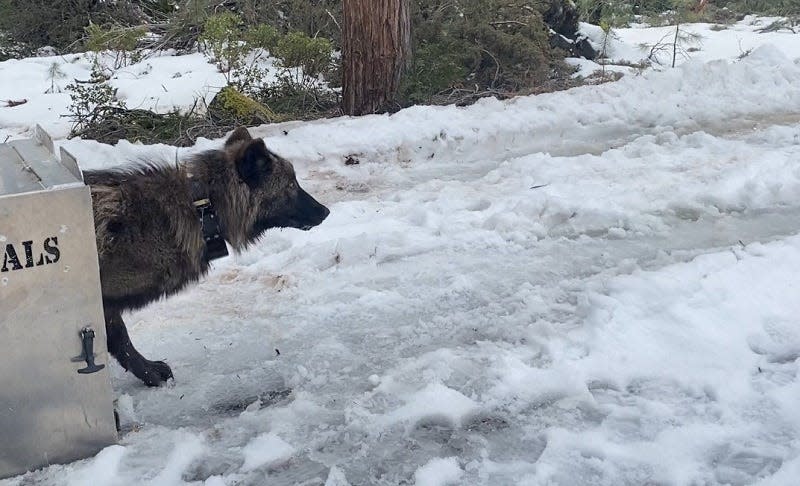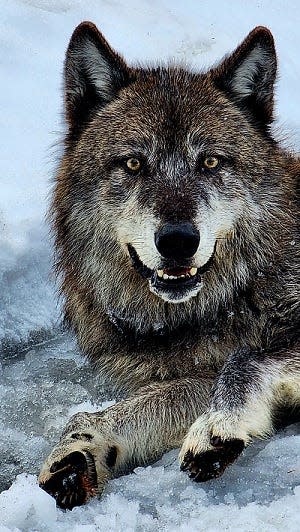2 gray wolves captured and fitted with satellite collars in Siskiyou County

State wildlife officials recently captured, collared and released two gray wolves in Siskiyou County, including a 4-year-old wolf that had migrated to California from northeast Oregon.
Capturing and collaring wolves enables wildlife officials to monitor wolf populations and minimize conflicts with livestock, according to the California Department of Fish and Wildlife.
The state used helicopters and airplanes to locate and capture the canines, state officials said.
“The capture of these wolves is fantastic, since we lost the only functioning satellite collar last summer, and ground capture efforts since then have been unsuccessful,” said Kent Laudon, a senior environmental scientist and the department's wolf specialist.
The 4-year-old male, known as OR85, arrived in California in 2020 and paired with a female that came from southwestern Oregon. They later formed the Whaleback Pack in Siskiyou County.
The pair produced a litter of seven pups in 2021 and eight pups in 2022, state officials said. One of the wolves collared was a 97-pound yearling male from the Whaleback Pack, officials said.
Gray wolves are considered an endangered species. The canines were once native to the Golden State but by the 1920s the species had been eliminated from California.
There are currently three known wolf packs in the state. The Lassen pack consists of six wolves; the Whaleback pack has 11 wolves and the Beckwourth pack has a minimum of one wolf, according to the state's most recent wolf management update.

Since the two wolves were collared, they have been transmitting signals that indicate their location, officials said. Wildlife officials can alert ranchers and others in the area of the packs to install flagging and other tools to ward off the animals, officials said.
In the Siskiyou County area where the Whaleback pack lives, there were 13 confirmed and probable livestock kills from October to the end of December 2022, according to the state. There were no confirmed livestock killings associated with the Lassen or Beckwourth packs during the last quarter of 2022, officials said.
"We’re already seeing interesting movements on agriculture lands and sharing that information with local folks to install fladry and other deterrent measures around cattle pastures,” Laudon said.
The state plans to try to capture and collar additional wolves later this spring, officials said.
The department of fish and wildlife was expected to host two workshops March 30 in Yreka for ranchers who have been affected by wolves. The state's 2021-22 budget set aside $3 million to compensate ranchers for losses due to wolves and pay for non-lethal deterrents to prevent wolf-livestock conflicts.
The first workshop is scheduled from 10 to 11 a.m. and the second one from 1 to 2 p.m. Both are at the Siskiyou County Department of Agriculture Conference Room 525, South Foothill Drive in Yreka.
Questions about the workshops can be emailed to wolfprogram@wildlife.ca.gov.
Reporter Damon Arthur welcomes story tips at 530-338-8834, by email at damon.arthur@redding.com and on Twitter at @damonarthur_RS. Help local journalism thrive by subscribing today.
This article originally appeared on Redding Record Searchlight: 2 gray wolves captured, collared in Northern California

